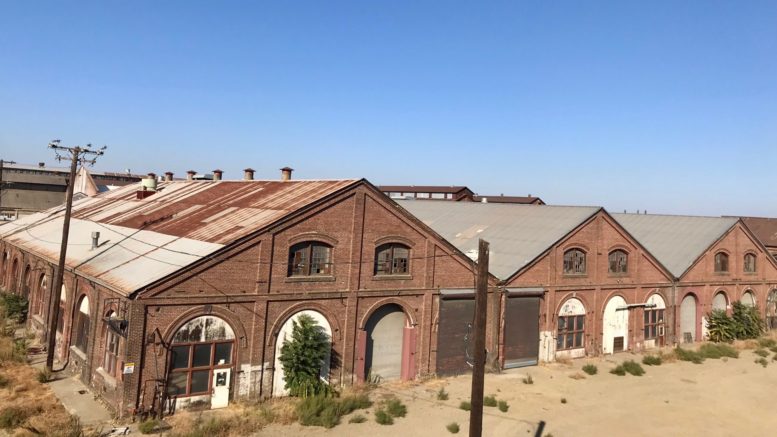Housing advocates say minimal requirement will worsen Sacramento’s rental crisis, housing segregation
By Scott Thomas Anderson
For Darryl Rutherford, November 10 took a turn for the surreal.
Rutherford, executive director of the Sacramento Housing Alliance, spent that day hosting a summit focused on preventing low-income and working-class people from being priced out of the capital. The event’s keynote speaker was then-incoming Mayor Darrell Steinberg.
Just after 12:15 p.m., Rutherford watched Steinberg deliver a rousing speech about the need to push back against an escalating affordability crisis in the city. Just after 6 p.m., however, Rutherford watched as the Sacramento City Council—the ranks of which Steinberg joined last week—allowed the largest urban infill development west of the Mississippi to move forward with a middling requirement to leave only 6 percent for affordable homes.
The vision that developers and elected officials share for the so-called railyard project includes a 20,000-seat major league soccer stadium, a sprawling Kaiser Permanente health facility, a historic business district and a maze of interconnecting bike trails that surround 10,000 new housing units. Council’s approval of 19 separate entitlements means only 600 of those homes, at most, will be offered at prices that the servers, baristas, janitors, ticket clerks, security guards and office staff working in the new wing of the city can realistically rent or buy.
The city’s project manager for the railyard, Richard Rich, downplayed concerns about that before the vote. “The road to tonight has included a deep reach into the community,” he assured council members.
A number of housing experts implored the council not to grant the entitlements unless 10 to 15 percent of the project could accommodate working-class Sacramentans—within the range of what the city required of its developers just three years ago.
A recent study by the California Housing Partnership Corporation, a policy research group, said Sacramento County needs more than 59,000 affordable rental homes to properly shelter the region’s lowest-income residents. A separate report from RentRange, a market intelligence firm, suggested that in 2015 Sacramento suffered the second highest year-to-year rent increase in the nation.
But the plan council members approved last month not only fixed the affordable housing share at 6 percent, it gave developers the option to vacate constructing half of those units by simply donating a total of three acres of land to the joint city and county agency that oversees low-income housing. The Sacramento Housing and Redevelopment Agency, would then build 300 of the affordable units itself on the three acres, adding an additional burden on local taxpayers rather than the developer.
Yet, SHRA commissioner Dana Simas acknowledged that a three-acre donation probably wouldn’t be enough for even 300 units. “Most affordable housing developers we work with agree they typically need more than one acre to develop 100 units,” Simas told council members.
Alexandra Reagan of the Sacramento Environmental Council reminded elected leaders that there was a lot at stake. “If we don’t build housing units in this development, and we don’t include enough affordable housing, both of those two things will continue to make segregation worse and worse in this city,” Reagan observed.
District 1 Councilwoman Angelique Ashby and District 3 Councilman Jeff Harris defended passing the entitlements on the grounds that the project would bring jobs to the city. They also noted that the former railroad yard’s level of chemical contamination makes it difficult for any developer to get the numbers to pencil out.
District 4 Councilman Steve Hansen and District 6 Councilman Eric Guerra expressed concern about the project’s level of affordable housing, but voted with the majority. Hansen stressed that the city would have to find other revenue sources to work on the housing problem.
More than a month later, Rutherford said he’s still in a daze about the missed opportunity. “It was very disheartening,” he told SN&R. “I was just at the summit, and it was great to hear Steinberg talking about homelessness and affordable housing, but then to walk into the council meeting the same night and see hardly any discussion—and for them to pass a plan that everyone who works on affordable housing feels is completely inadequate—well, it was hard for me to even go home that night.”
At his December 13 inauguration, Steinberg emphasized that building affordable homes and sheltering local homeless are among his top priorities. The new mayor said he plans to help the city bring hundreds of new units online for low-wage earners during his first months in office, with a related goal of building 2,000 permanent housing options for the homeless before his term is up. How will he do it?
“Stay tuned,” Steinberg said with a smile after being sworn in.


Be the first to comment on "Railroaded: City’s railyards development plan skimps on affordable homes"